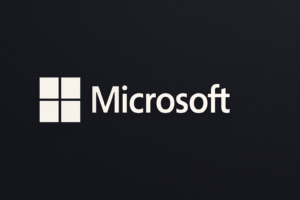In today’s economic landscape, navigating personal finances on a single income can be particularly challenging. However, with disciplined budgeting and strategic saving, single-income households can achieve financial stability and long-term goals. This article explores effective budgeting methods, savings strategies, and expert insights to empower those managing finances solo.
Understanding the Landscape of Single-Income Households
According to recent census data, approximately 27% of American families are single-income households. This trend can stem from various factors, including one partner staying home to care for children, unemployment, or a decision to prioritize work-life balance. Given the rising costs of living, especially in urban areas, it is essential for these households to adopt savvy financial strategies.
Effective Budgeting Techniques
Creating a precise budget is the cornerstone of financial management for single-income households. A common methodology is the 50/30/20 rule, which allocates 50% of income for needs, 30% for wants, and 20% for savings and debt repayment.
For instance, a household earning $3,000 monthly would aim to spend $1,500 on necessities such as housing and groceries, $900 on discretionary spending, and $600 towards savings or debt. However, individual circumstances may necessitate adjustments. Families may find it prudent to dedicate a larger proportion of their income to savings during economically challenging times.
Moreover, utilizing budgeting apps such as Mint or YNAB (You Need a Budget) can help track expenditures and ensure adherence to the established budget. These tools provide valuable insights into spending habits and enable users to make informed decisions.
Building an Emergency Fund
An emergency fund is a critical component of financial health, particularly for single-income households where financial shocks can lead to substantial stress. Financial experts recommend setting aside three to six months’ worth of living expenses in a high-yield savings account. This fund should be easily accessible, providing peace of mind during unforeseen situations like job loss or medical emergencies.
For example, if a household’s monthly expenses total $2,500, the goal should be to save between $7,500 and $15,000. This buffer allows families to navigate hardships without derailing their financial stability.
Smart Saving Strategies
Beyond emergency savings, setting specific savings goals can lead to more significant financial growth. Single-income households may find it beneficial to utilize automated savings, transferring a set amount directly into savings accounts each paycheck. This method reduces the temptation to spend and ensures consistent savings.
Another approach is to take advantage of employer-sponsored retirement accounts, such as a 401(k). Contributing to these accounts not only builds retirement savings but may also lead to employer-matching contributions, which can significantly enhance long-term savings.
In addition, exploring low-cost investment vehicles such as index funds can provide better returns compared to traditional savings accounts. Financial advisors suggest that households start investing early, even in small amounts, to take advantage of compound interest opportunities over time.
Debt Management
Managing debt is crucial for single-income households aiming for financial health. It is advisable to prioritize high-interest debts, such as credit card balances, as they can significantly hinder budgetary goals. The snowball method—paying off smaller debts first—can quickly improve cash flow and morale.
Moreover, consolidating debts through low-interest personal loans or balance transfer credit cards could relieve monthly financial burdens. Consulting financial professionals for personalized strategies could further optimize debt elimination.
Expert Opinion
Financial consultant Jane Doe emphasizes the importance of adaptability in budgeting. “Single-income households must remain flexible and adjust their financial plans as life circumstances change. Regularly reviewing budget goals can help to identify areas for improvement,” she states, advising families to revisit their budgets quarterly.
Furthermore, Jane suggests fostering a mindset of continuous learning regarding personal finance. “Reading financial literature or attending local seminars can be beneficial for gaining diverse perspectives on saving and investing.”
What’s Next for Single-Income Households?
As economic uncertainty looms, single-income households must remain proactive in their financial planning. Staying informed about changes in taxation, healthcare, and job markets will provide a broader perspective to navigate potential challenges effectively.
In conclusion, successfully budgeting and saving on a single income demands meticulous planning, consistent monitoring, and a proactive approach to financial management. By adopting effective budgeting techniques, building an emergency fund, and employing smart saving strategies, single-income households can create a stable financial future, ensuring readiness for both expected and unexpected challenges. With diligence and informed decision-making, these households can thrive despite the constraints of a single income.







